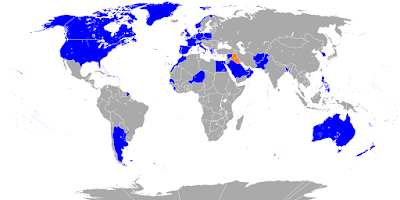From the MT:
"Poroshenko Orders Ukrainian Military Focus on Crimea, Black Sea"
Ukraine is planning a "substantial enhancement" of its military position around the Black Sea and on the border of Crimea as part of a strategy of regaining the territory that Russia annexed two years ago. Ukrainian President Petro Poroshenko announced the initiative on Friday, commemorating the second anniverary of the Russian annexation. "Crimea was, is and will be an integral part of the Ukrainian state and the country-criminal will be forced to return the loot," Poroshenko said. "I am confident that we will certainly return these two administrative territories under the Ukrainian sovereignty. This extremely complex and promising process has already begun. Today, I have instructed to organize a special session of the National Security and Defense Council to clarify our strategy for the reintegration of Crimea," he said. This strategy will include building up Ukraine's military capacity along the Black Sea and the Kherson oblast, which borders Crimea, Poroshenko added: "The Ministry of Defense and the General Staff of the Armed Forces of Ukraine are instructed to submit proposals for substantial enhancement of military capacity of Ukraine in Kherson region and along the entire Black Sea coast. Russia has increased its military presence in the region, completes the peninsula’s transformation from a flourishing international resort into a big military base, which poses a nuclear threat not only to Ukraine, but also to all countries of the Black Sea region." This would appear to be somewhat of a shift in Ukraine's military strategy, which has, understandably, been focused on fighting a civil war with pro-Russia militants in the eastern part of the country. Ukraine has lately been working on developing a new overall military strategy, which has been criticized from some quarters for an excessive focus on the so-called "anti-terror operation" in the Donbass and ignoring other potential Russian threats. Also this week, Ukraine's interior minister Arsen Avakov said that his ministry is preparing new units that will be able to take back Crimea. "We need a new army, a new national guard, new police. That's what the government of Ukraine is doing right now. And you have to understand that. We should rebuild them and then, when we want, Crimea will be with us. I have no doubts about that," he said in an interview with Ukrainian television station 1+1. This plan will include Crimean Tatars, as well, Avakov added. "Together with Mustafa Cemilov and Refat Chubarov [Crimean Tatar politcal leaders] we're preparing guys as special separate units of the national guard. The project is being prepared in order to be ready to return Crimea to us. I'm sure that it will happen when we're strong, and when we're ready." Meanwhile, Russia continues to strengthen its military position in Crimea, and the U.S. is stepping up its efforts to train and equip the Ukrainian armed forces. U.S. ambassador to Kyiv Geoffrey Pyatt said last week that the U.S. plans to give Ukraine $335 million in training and equipment to Ukraine this year, compared with $266 million in such aid over the past two years.
^ The Ukraine has every right to regain the internationally-recognized territory (the Crimea) the same way that any country would. Russia likes to act as though they are always the victim, but in this case they are the aggressors. If Germany invaded, occupied and annexed Kaliningrad (which used to be German East Prussia until the Soviet Union took it in 1945) then one would expect Russia to go all-out to regain their territory. Russia can't ignore the international agreements it made (especially those since the USSR collapsed in 1991) with regards to the Ukraine and the Crimea just because they changed their mind. I hope the Ukraine can end the war in the Donbass and regain the Crimea so that they can focus their attention on improving the lives of the ethnic Russians, ethnic Tartars and ethnic Ukrainians in the Ukraine rather than spending all their time and money on war. ^
http://www.themoscowtimes.com/news/article/poroshenko-orders-ukrainian-military-focus-on-crimea-black-sea/561043.html



